Banff National Park has spent millions building animal overpasses. The Trans Canada highway can be a dangerous place for even the largest of wild Canadian animals.
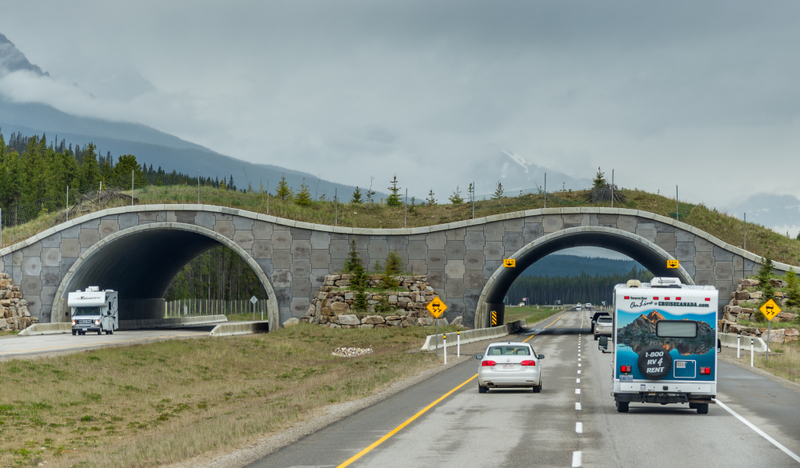
In Banff, they’ve poured money into building overpasses that prevent road accidents and save the lives of thousands of animals and humans each year.
Moving to Canada
On election night in 2016, searches for "move to Canada" on Google spiked so aggressively that the Canadian Citizenship and Immigration website crashed. Being a new world country, immigration has been, and remains, the most important factor in Canada's population growth.

Canada has one of the highest immigration rates per capita among developed nations. Altogether, 22.3% of the Canadian population identifies as a visible minority and 21.9% as foreign-born. 341,000 new permanent residents were welcomed to Canada in 2019, and that number does not include temporary workers or foreign students.
'Almost' the Longest Street in the World
Canada was once considered to be home of the longest street – well, kind of. Yonge Street intersects with five other major streets in the downtown area. It was known as the world's longest street until 1999; even the Guinness Book of World Records repeated the misconception. This was due to a conflation of Yonge Street with the rest of Ontario's Highway 11.

In fact, Yonge Street did form a part of Highway 11, which led to those claims about Yonge Street being the longest street in the world. But Yonge Street could only claim that title if it were fully connected with Highway 11, which has never been the case.
The Largest Source of Fresh Water
With its millions of lakes and rivers, it’s not surprising that Canada has earned this title. For instance, the Estuary and the Gulf of St. Lawrence is one of the largest and deepest estuaries in the world. Its water comes from the Great Lakes, a series of interconnected freshwater lakes in the upper mid-east region of North America.
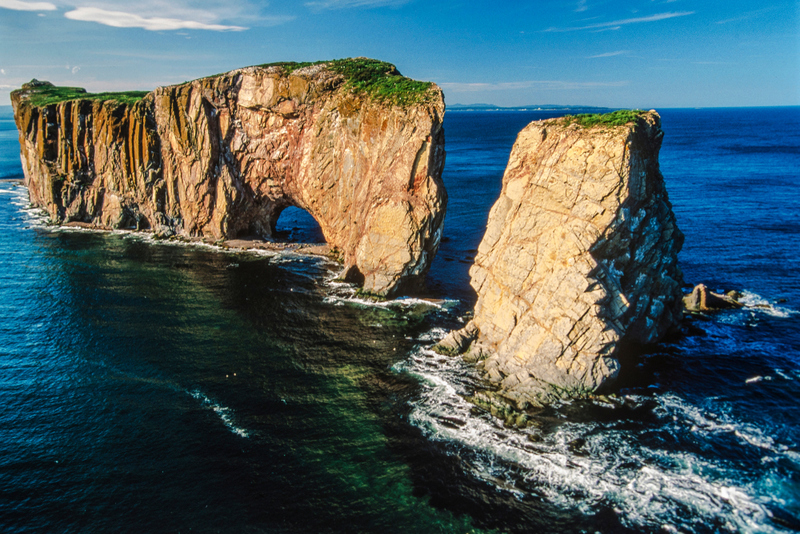
It mixes with oceanic saltwater as it widens into a large estuary - a water passage where the tide meets a river current - near Ile d’Orléans.
Canada's Ice Hotel
The famous Hotel de Glace in Quebec is built using 400 tons of ice and 12 000 tons of snow. The Hotels is just a 15-minute drive from Quebec City, with the point of being fully immersed in the unique, snowy, and icy surrounds.
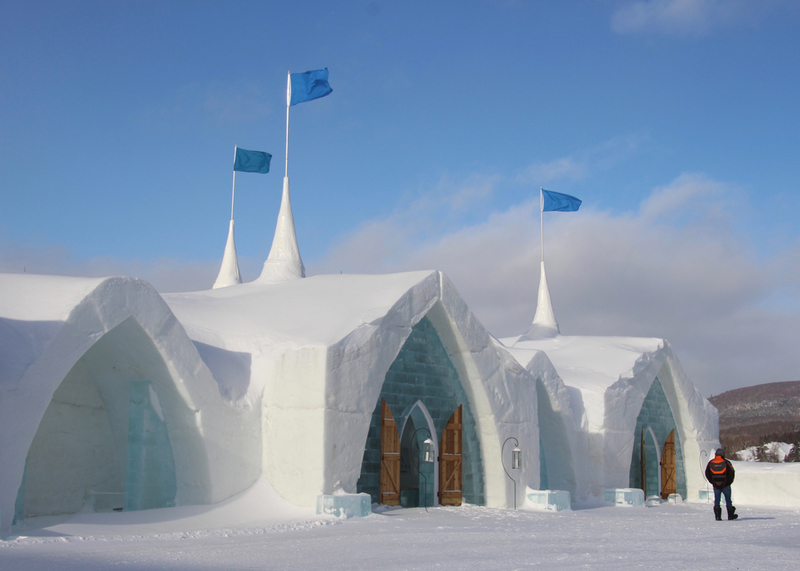
The Hotel de Glace has 45 rooms, each designed with a different theme, with some rooms even having their very own fireplaces! Since the hotel melts every summer, the hotel is built from scratch in winter, and each year it's designed with a brand new theme.
Rideau Canal
As Canada's capital, Ottawa attracts tourists from all over the world to visit its historic sites and landmarks, enjoy its culture, and appreciate its sights and sounds. Ottawa is home to the Rideau Canal, also known unofficially as the Rideau Waterway, which connects Canada's capital city of Ottawa, Ontario, to Lake Ontario and the Saint Lawrence River at Kingston, Ontario.

It is 202 kilometers long. This canal is also a UNESCO world heritage site, and in winter, it happens to house the world's longest skating rink.
The First Pace-Maker
Canada also boasts of inventing the first subcutaneous pacemaker! It was built in 1949 by Canadian engineer John Hopps, based on two Toronto-based cardiac surgeons, Wilfred Bigelow and John Callaghan. Their research and experiments with heart surgery made them notice that an electrical pulse could restart the heart.

They contacted electrical engineer Hopps to build a clinical device for them. Further progress made by them, and other inventors, led to the first implantable pacemaker in 1958. It was used on a Swedish man who, thanks to the device, lived to the age of 86. Wilson Greatbatch is considered the inventor of the first practical implantable pacemaker.
Bay of Fundy
Many Americans would be quick to write Canada off as their timid, maple-scented upstairs neighbor, but those Americans are definitely missing out. Canada is packed with some of the most majestic sights in the hemisphere, from coast to coast, south to north.

Take the Bay of Fundy in New Brunswick for example, this aquatic fantasia is home to a 50ft tidal range, the world's highest tide, and it's five times higher than the average on the Atlantic. Twice every day, around 160 billion tons of water move in and out of the Bay of Fundy, which is enough to fill the Grand Canyon.
The Pager was Invented in Canada
Alfred J. Gross, a Toronto-based communications pioneer, invented the pager in 1949. He is also often recognized as the inventor of the walkie-talkie, he shares this distinction with fellow Canadian Donald Hings, who is also credited for having created the two-way radio in 1939.
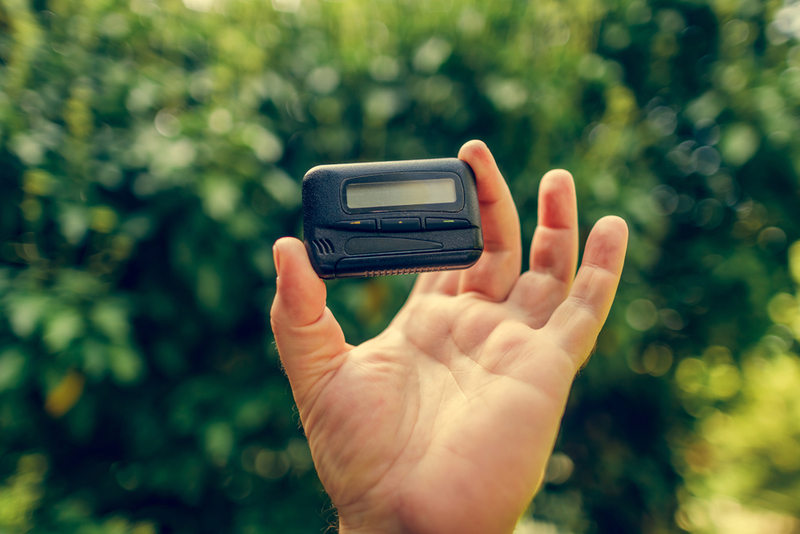
Alfred J. Gross also invented the cordless phone and the CB radio. Before he died, he said: "I was born thirty-five years too soon. If I still had the patents on my inventions, Bill Gates would have to stand aside for me."
Chuckwagon Racing
For one week in July, the city of Calgary transforms into the home of the Calgary Stampede. The first time the chuckwagon race was held was at the Calgary Stampede occurred back in 1923, with prizes totaling $275.

To get the Canadian Championship title, each ensemble - which consisted of four horses, wagon, driver, and four helpers - were required to make a figure of eight around barrels, head out through a backstretch, then around a track, unhook the horses from the wagon, and first one to finish wins.
Royal Golf
The Royal Montreal Golf Club was founded in 1873, is the oldest golf club in North America. It's also the oldest in continuous existence. It was established by eight men in 1873. Queen Victoria granted permission to use the prefix "Royal" back in 1884.

The Royal Montreal was one of the five founding clubs of the Royal Canadian Golf Association, founded in 1895 as the governing body of golf in Canada. This governing body organizes the major national championships and the Canadian Open, the first of which was played at Royal Montreal in 1904.
Canada’s Name
The name Canada likely comes from the Huron-Iroquois Indian word Kanata, which means village or settlement and it was actually named through a misunderstanding. In 1535, when French explorer Jacques Cartier traveled with Indian youths, they used the word for Stadacona, a village where Quebec City is located today.

Cartier then used the word Canada to refer to the entire surrounding area, and in 1547, Canada appeared on maps pertaining to land north of the St. Lawrence River.
Quebec is a First in More Ways than One
Quebec was builtin 1695, with this city's fortifications reach nearly 4.6 kilometers, which is almost three miles. Québec City sits on the Saint Lawrence River in Canada's mostly French-speaking Québec province.
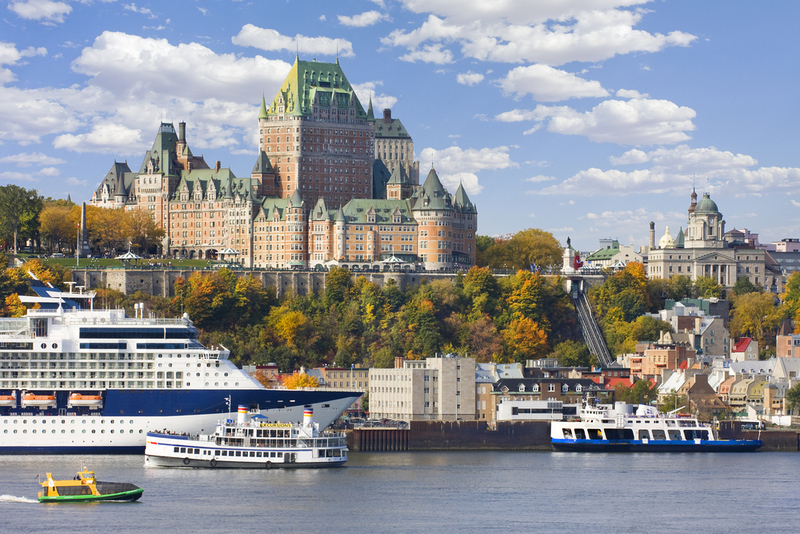
This means that Quebec is the only walled city north of Mexico. As if that wasn't enough, Quebec was also the first city in North America to become a UNESCO World Heritage Site.
Maple Syrup
Of all the world’s maple syrup, 71% comes from Canada, which probably isn’t that surprising when we think about it. But what is fascinating is that 91% of maple syrup production occurs in Quebec alone, according to Pure Canada Maple.
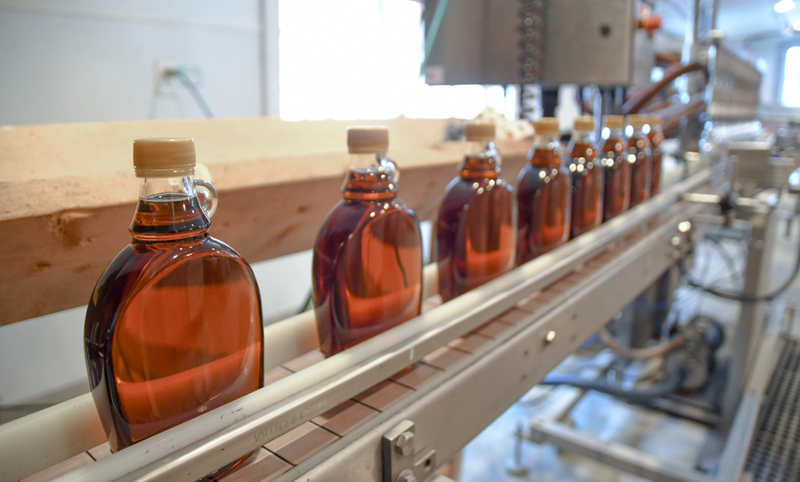
Canada also makes up 80% of global green lentil exports, with 95% produced in Saskatchewan.
Nakwakto Rapids
The infamous Nakwakto rapids are one of the top cold water dives that you can do in Canada. The Guinness Book of World records lists the Nakwakto rapids as having the fastest navigable tidal rapids in the world, up to 16 knots (30 km/h). There you can also find the beautiful, and unique Nakwakto Goose-neck barnacle found nowhere else in the world.

The rapids are powered by the changing tides, which forces huge amounts of water through this relatively narrow bottleneck. So intense is the tidal flow here that Turret Rock has also been called “Tremble Island” because it’s reputed to shake from the ripping water.
Alert
In Nunavut Territory, Alert is the northernmost permanent settlement in the world and is only 817 kilometers from the North Pole. Being so far north, Nunavut's weather conditions usually fall somewhere between cold and freezing, with some parts of this large territory are vastly colder than others.

Their summer temperatures can rise as high as 86°F, but their winter temperatures can still be almost as cold as those in the High Arctic.
Canada's Sand Dunes
Believe it or not, Canada even has sand dunes, and they have the world’s most northerly sand dunes in the Athabasca Provincial Park in northwest Saskatchewan. They are 30 meters high, and the Sand Hills of Saskatchewan near Moose Jaw is also a sight to see.
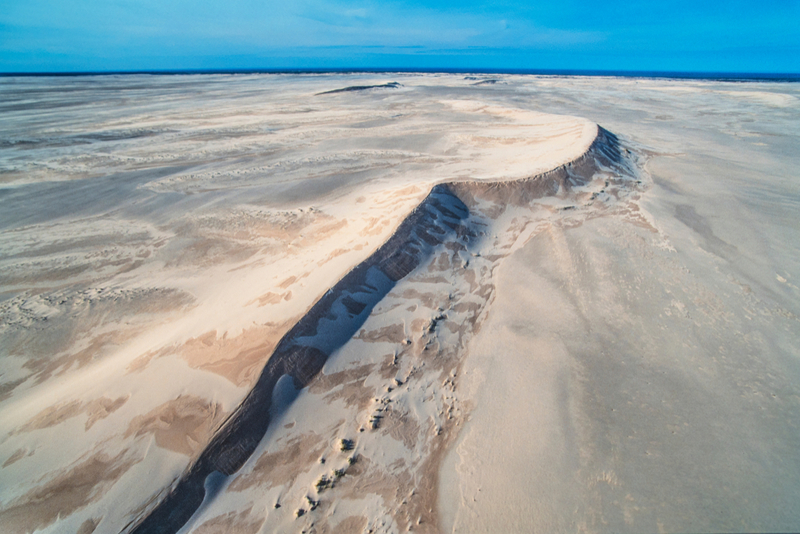
This unique geophysical land feature in the boreal shield ecosystem stretches approximately 100 kilometers along the south shore of Lake Athabasca, the Athabasca Sand Dunes is the largest active sand surface in Canada.
Winnie the Pooh
Winnie the Pooh was, in a roundabout way, named for the city of Winnipeg. A.A. Milne often visited a Canadian black bear at the London Zoo, named Winnie, after the town of Winnipeg.
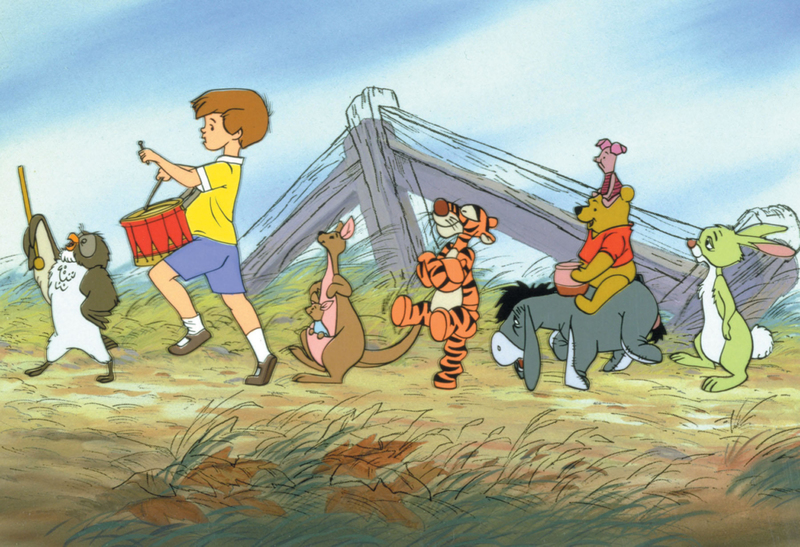
Milne subsequently named his character bear after the real bear. In the beginning, it explained that Pooh was, in fact, Christopher Robin's Edward Bear, who had been renamed by the boy.
Orca FM
Vancouver Island has its very own whale radio station, that right; it plays the sounds of whales 24/7. Unsurprisingly, it’s named Orca FM, and it was the world’s first All-Whales-All-The-Time radio station. It began to broadcast from a killer whale sanctuary along Vancouver Island in 1998.

Their whale calls were picked up for ORCA FM by an offshore underwater microphone located in 30 meters of water. The radio signal was broadcast over a 15-km radius of the Johnstone Strait area and was transmitted at the Vancouver Aquarium.
When in Downtown Calgary
Downtown Calgary is arguably the densest downtown area of any city of its size in North America. You can walk 18 kilometers through downtown Calgary without going outside.
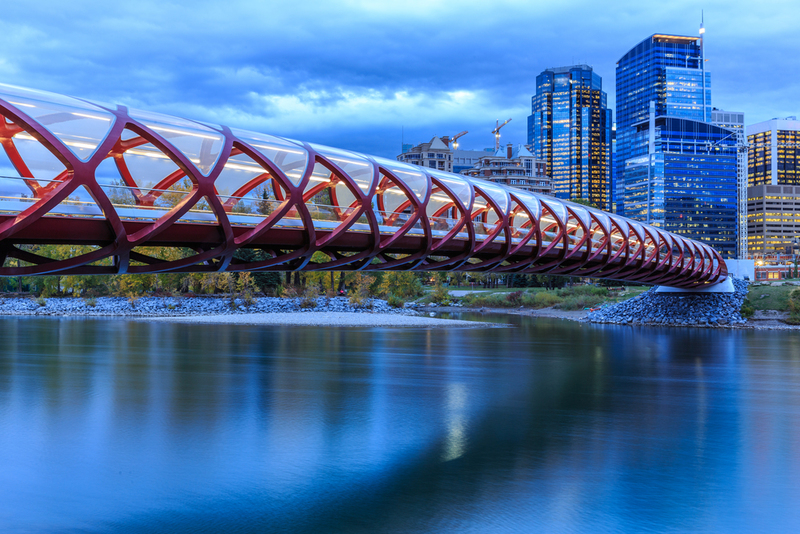
Their +15 walkway is 15 feet above the ground and was built to help pedestrians get around during the brutal winter temperatures. The +15 system is the largest of its kind in the world!
Forget, Saskatchewan
If you were ever driving along Highway 13 in Saskatchewan, it would be easy to pass by this small village without much notice. With just one operating business, a church, and some abandoned buildings, the tiny, two-block settlement in Saskatchewan's south-eastern corner doesn't seem like much.

With miles of monochromatic farmland stretch in every direction, and the skeletons of maple, poplar, and ash trees standing guard along the town’s border. This may be why they named this little town, Forget. Now, what were we talking about?
For the Animals
Banff National Park has spent millions building animal overpasses. The Trans Canada highway can be a dangerous place for even the largest of wild Canadian animals.

In Banff, they’ve poured money into building overpasses that prevent road accidents and save the lives of thousands of animals and humans each year.
Banned in Canada!
The supremely intolerant, attention-seeking group known as the Westboro Baptist Church and its members have been banned from entering Canada.

The notoriously homophobic group is known as America's most hated family for protesting funerals of fallen U.S. soldiers with picket signs to disseminate its belief that God hates gays. Well done, Canada!
Now That's a Weird Law
While we're on the subject of Comic books, it is illegal in Canadian to have comics that depict criminal acts. Now, this may sound like some crazy plot, but it dates back to a forgotten stipulation in the Criminal Code of Canada dating back to the 1940s.

A "crime comic," in this case, according to the criminal code, is any magazine or periodical which depicts either the commission of a crime or the events connected with the commission of a crime, before or after."
The Real Canadian Superheroes
Some of the world's most famous superheroes were imagined by Canadians, including Superman and Wolverine. Even before Deadpool decked the big screen with his anti-hero banter and jokes about Canada, many other superheroes used their powers to fend off American influence, battle invaders, and so much more.
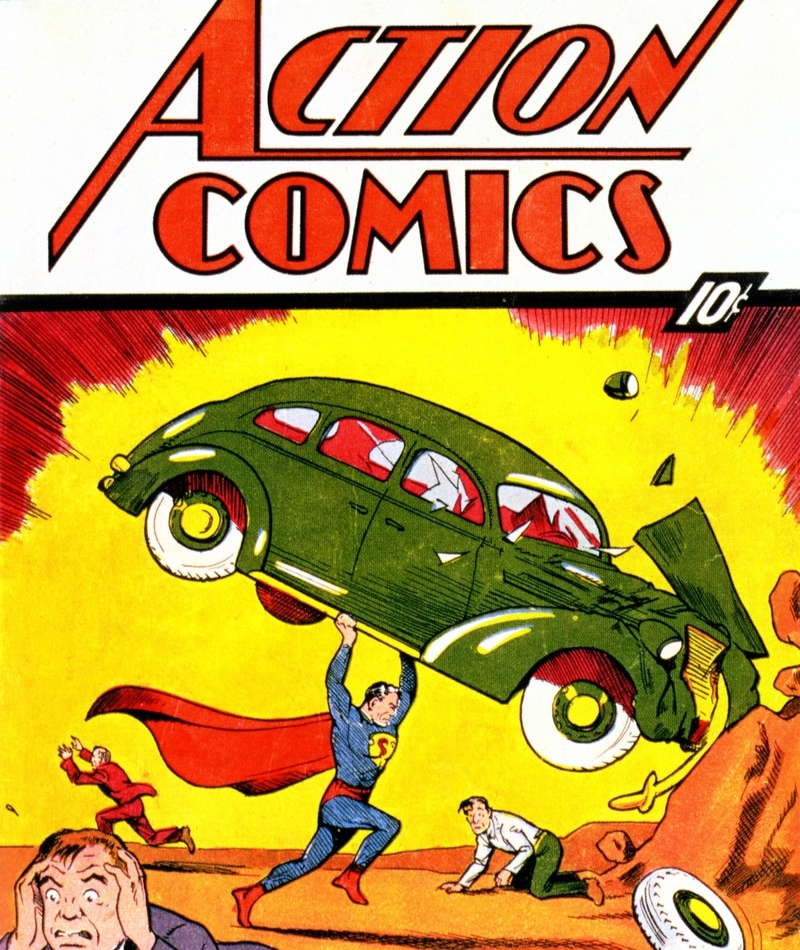
The Canadian strain of superhero is a part of the country's pop cultural history and lives on in movie screens and comic books all across the world.
'Eh?'
The popular and all too well-known Canadian interjection "eh" is entered in the Canadian Oxford Dictionary as a legit word.
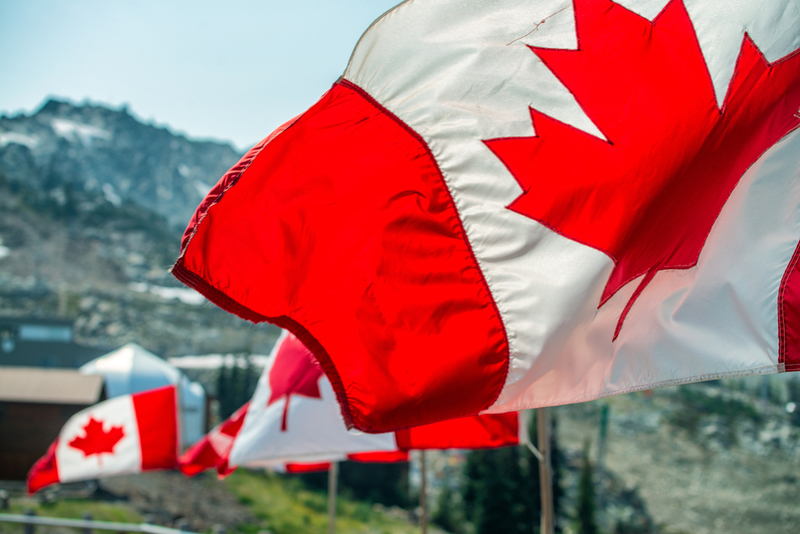
The classic Canadian term used in everyday conversation can be used to say "hello," show surprise when you're joking, or nudge a person to respond. It's similar to the words "huh," "right?" and "what?" commonly found in U.S. vernacular.
Canada's Official Flag
Canada got its very own flag 100 years after it became a country! — on February 15, 1965. In 1964, Canada's Prime Minister Lester B. Pearson formed a committee to resolve the ongoing issue of their official flag, or rather the lack thereof, sparking a serious debate about changing the Union Flag.

Out of three choices, they chose the maple leaf design by George Stanley. The flag then made its first appearance on February 15, 1965, with this date now being celebrated as National Flag of Canada Day.
Elizabeth Catherine Bagshaw
Elizabeth Catherine Bagshaw was one of Canada's first female doctors and the first medical director of a birth control clinic in Canada. She has been recognized as contributing outstanding enrichment to the quality of life of women in Canada. She pursued a career in medicine at a time when women were not accepted in the field.
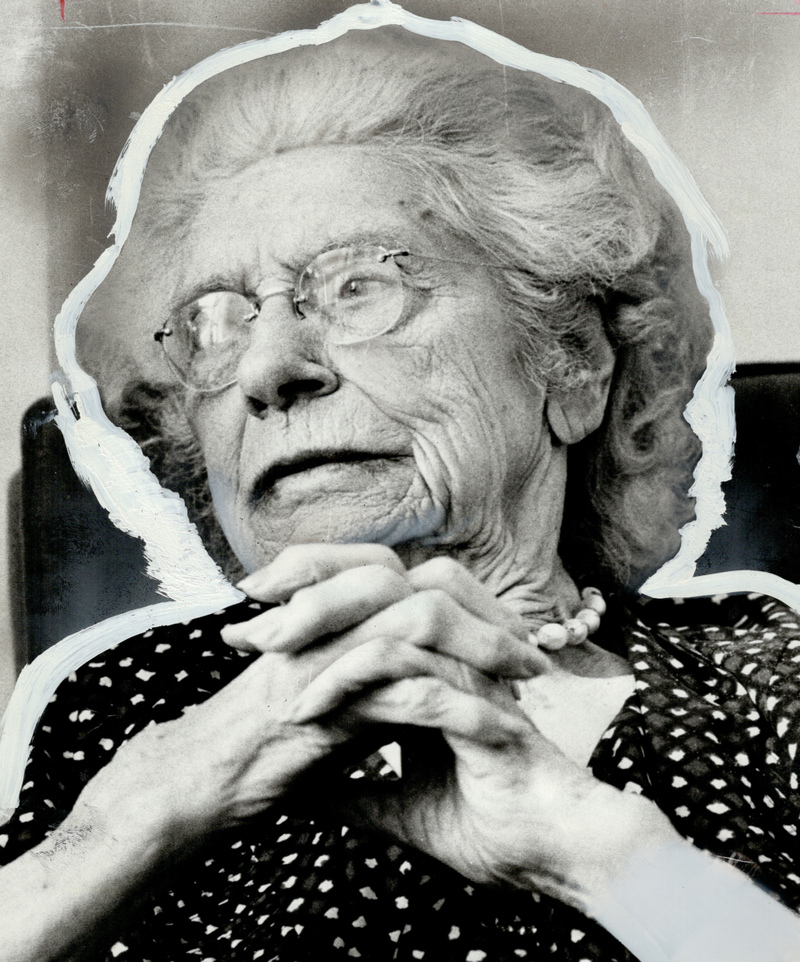
Still, despite her obstacles, Dr. Bagshaw entered Toronto Women's Medical College in 1901, just 18 years after it opened. Dr. Elizabeth Bagshaw's devotion to women's health is a treasured part of our nation's medical heritage.
The Tallest Totem Pole
Standing at 173 feet tall, the wooden tribal totem in Alert Bay, British Columbia, is demonstrably the tallest totem pole in the entire world. While most totem poles represent a single family, this pole represents different factions of the Kwakwaka’wak people.
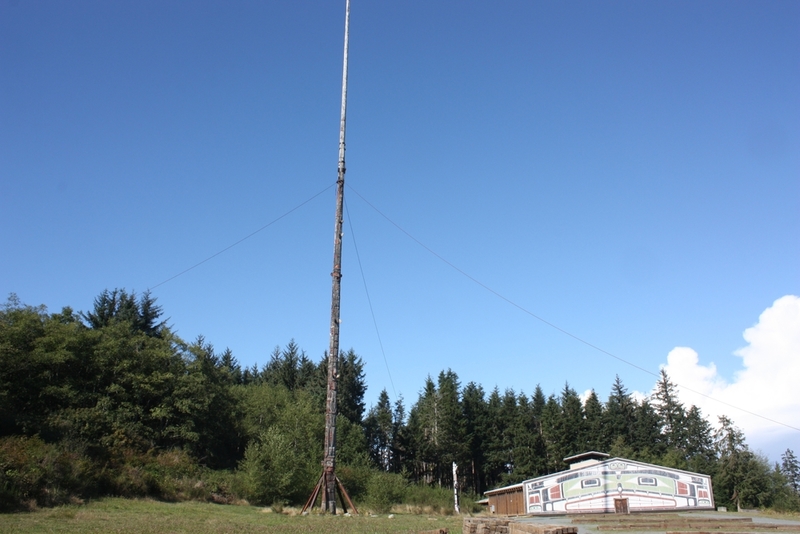
The figures include the Sun Man, a whale, an old man, a wolf, the Thunderbird and its cousin, a two-headed serpent, a bear holding a salmon, and a raven holding copper.
The Baseball Glove
Baseball may be the National sport in the United States, but the baseball glove was invented in Canada in 1883 by Arthur Albert Irwin. He had an Irish dad and a Canadian mom, and at 25 years old, he was playing shortstop for the Providence Grays when he broke two fingers.
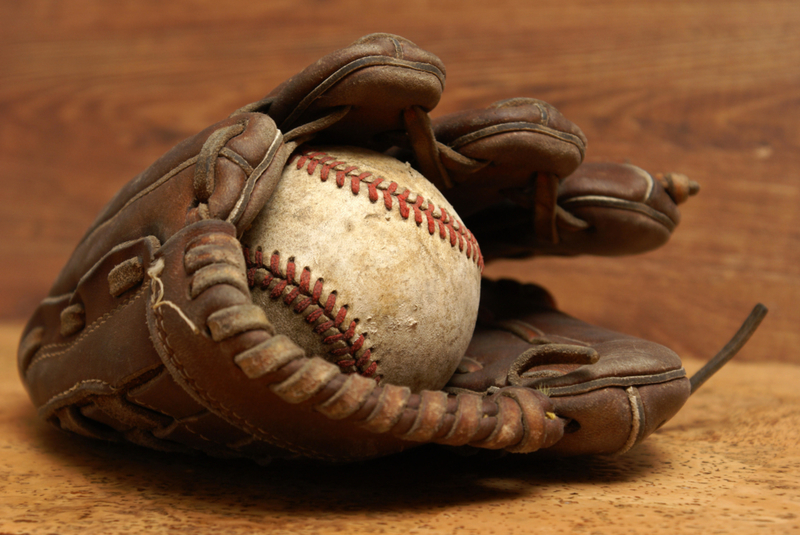
Rather than quit playing, the wily fielder proved he deserved his reputation when he got an oversized leather glove, added padding to it, stitched fingers three and four together, and invented the fielder's glove.
Canadian Weather Phenomenon
Calgary is famous for its Chinooks – this weather phenomenon that can raise the temperature by 10 degrees in a matter of minutes. A strong chinook wind can make snow one foot deep nearly vanish in one day. The snow partly melts and partly sublimates in the dry wind.
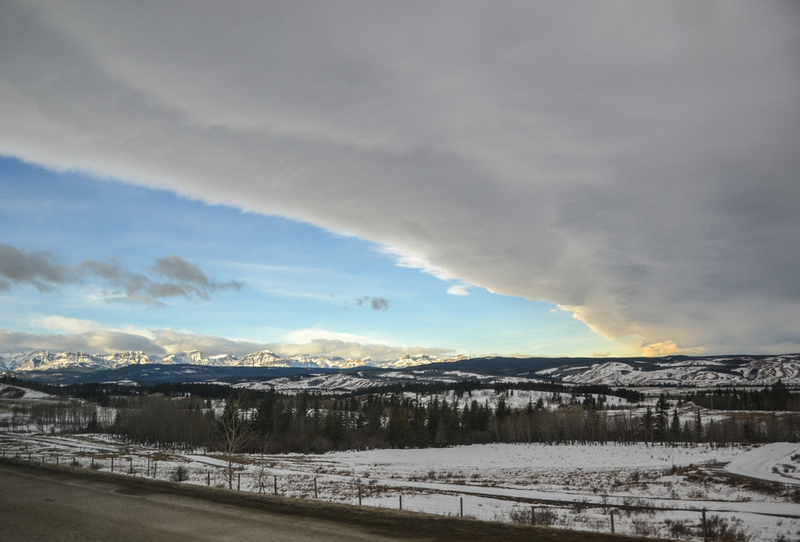
Chinook winds have been seen to raise winter temperature, usually from below −4°F to as high as 50–68°F for a few hours or days, then temperatures plummet to their base levels.
Manitoba is Snake Territory
Although most people would think that Australia is the snake capital of the world, the province of Manitoba actually has the largest concentration of snakes in the world.

Around 70,000 snakes came out of hibernation in the Prairie province this year. The most popular breed is the red-sided garter snake.
Goose
Canada has three official languages and one of them is "goose" — just kidding. Their official languages are French and English, but Canadian geese have their own language.
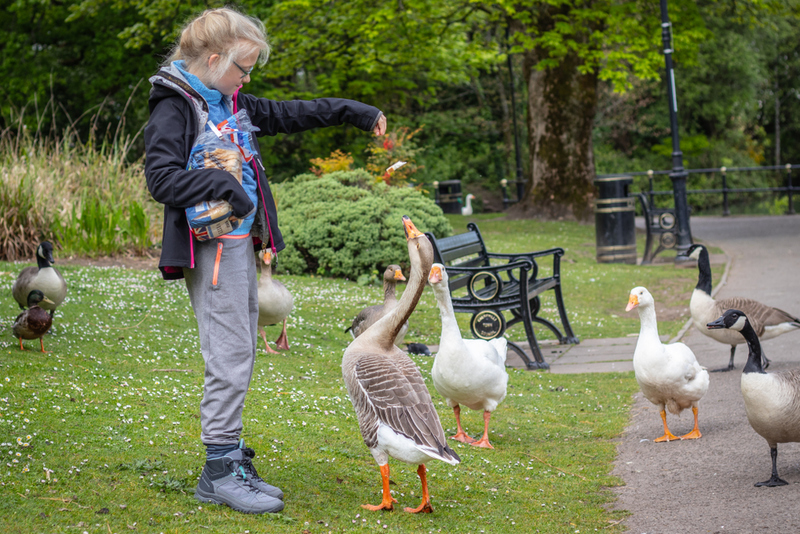
Scientists believe that geese have as many as 13 different animal calls that are distinctly their own, everything from greetings and warnings to happiness.
Prepared For UFO's
Canada is the first country ever to build a landing pad specifically for UFOs. It's located in Alberta and was opened back in 1967. Canada's Minister of National Defence at the time was also there to see the unveiling.
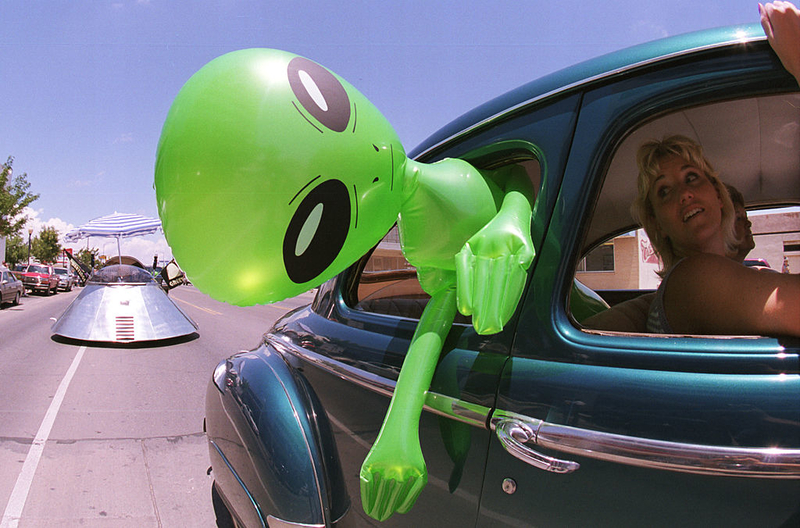
The platform weighs in at an impressive amount of 130 tons, and the concrete structure also contains a time capsule, only to be opened in 2067.
Santa Claus is Canadian
Canada's Minister of Immigration declared that Santa Claus was a Canadian citizen. He also argued that this is why his signature look is a red and white suit – the colors of Canada.
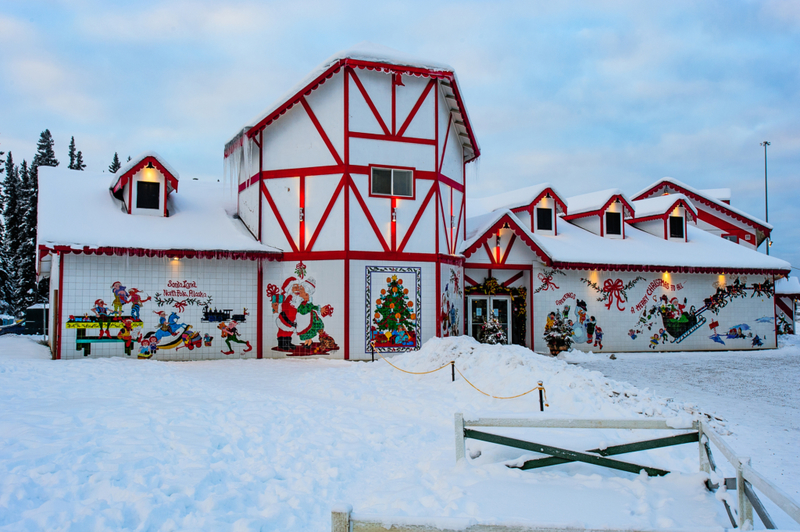
For those who want to, they can send letters to Santa, using this address: Santa Claus, North Pole, H0H 0H0, Canada.
Canada's National Parks
One of the fascinating facts about Canada is that the country is so big, even its parks dwarf other countries. Just look at Nahanni National Park Reserve; it's an incredible 30,050 square kilometers—bigger than countries like Israel and Albania.

Wood Buffalo National Park is even bigger at 44,807 square kilometers, which makes it bigger than the Netherlands, Denmark, and Switzerland.
The World's Longest Coastline
While Canada might not bring to mind pictures of white sandy beaches and blue waters, Canada has the world's longest coastline, which borders three different oceans: the Atlantic, Arctic, and Pacific.

To put that interesting fact in perspective, that constitutes for 202,080 of the world's total 356,000 kilometers of oceanfront property.
Huge Country, Small Population
Despite being such a huge country, Canada has one of the lowest population density in the world, coming in at fourth, which means there are only three people occupying each square kilometer!
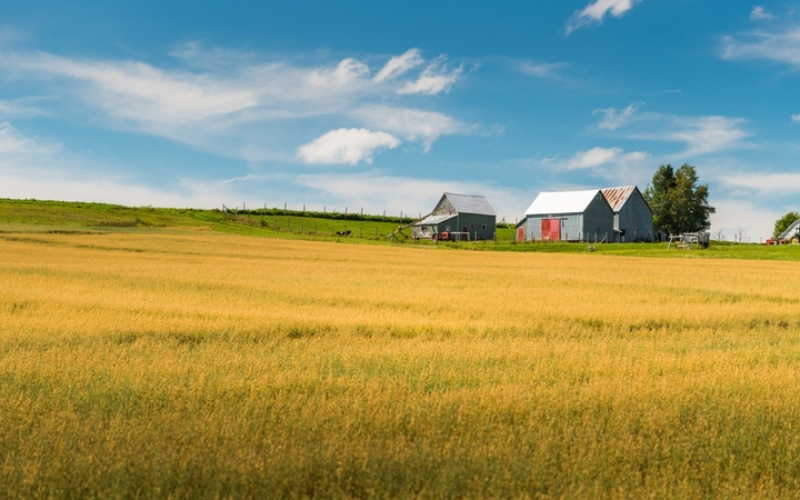
To add to that interesting fact, almost half of the population in Canada were born in other countries.
A Button for Effort
Back in World War II, the Canadian military decided to give out buttons to those who had enlisted to join the war effort but who were refused due to various medical reasons.

The purpose of these buttons was to show that these individuals were willing to fight as part of Canada's war effort.
Blame Canada
Many people may not know about this, but the defection of a Soviet clerk to Canadian officials is sometimes cited as the triggering event that led to the Cold War. Three short days after the end of World War II in September of 1945, Joseph Gouzenko deserted his position as a Soviet cipher clerk, taking along with him a briefcase of 109 documents regarding Soviet espionage activities in the West!

These events instigated an extensive investigation into Soviet spying by the Canadian government, which arrested over 30 suspects.
Smugglaroos
The favorite children's snack food Dunk-a-roos were discontinued in the US in 2012, but production continued in Canada— lucky for some Americans who frantically want to get their hands on these treats. A few years ago, General Mills, the producer of Dunk-a-roos, introduced a campaign called "Smugglaroos."
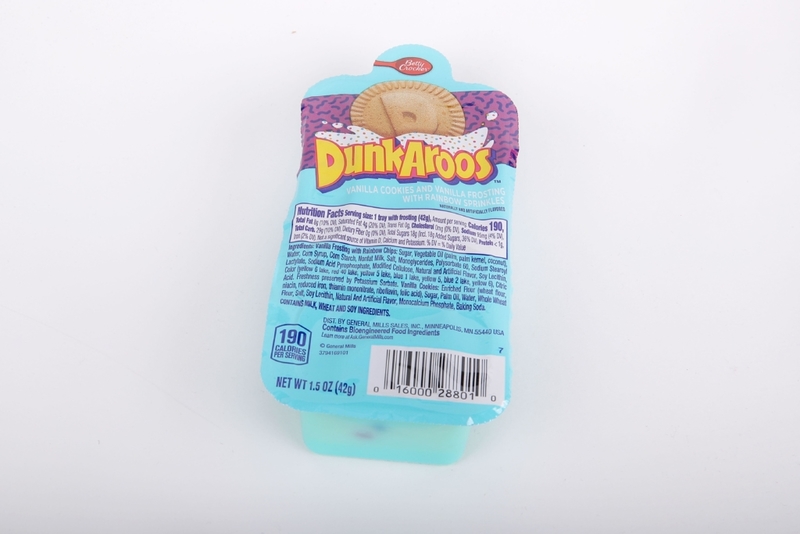
This inspired Canadians who travel to the United States to bring packages of Dunk-a-roos to their American friends. It's only fair seeing as Americans brought Canadians all the weird new flavors of Oreos and Pop-Tarts.
Some Cereal and 19 Acres
In the 1950s, Quaker Oats, the breakfast cereal giant, offered their customers one square inch of land in the barren Northern Canadian territory of the Yukon if they purchased a box of their oatmeal cereal. The giveaway became a legal battle for Quaker Oats, with twenty-one million deeds that represented about 19 acres of land, were printed and placed on Quaker Oats cereal boxes across the country.
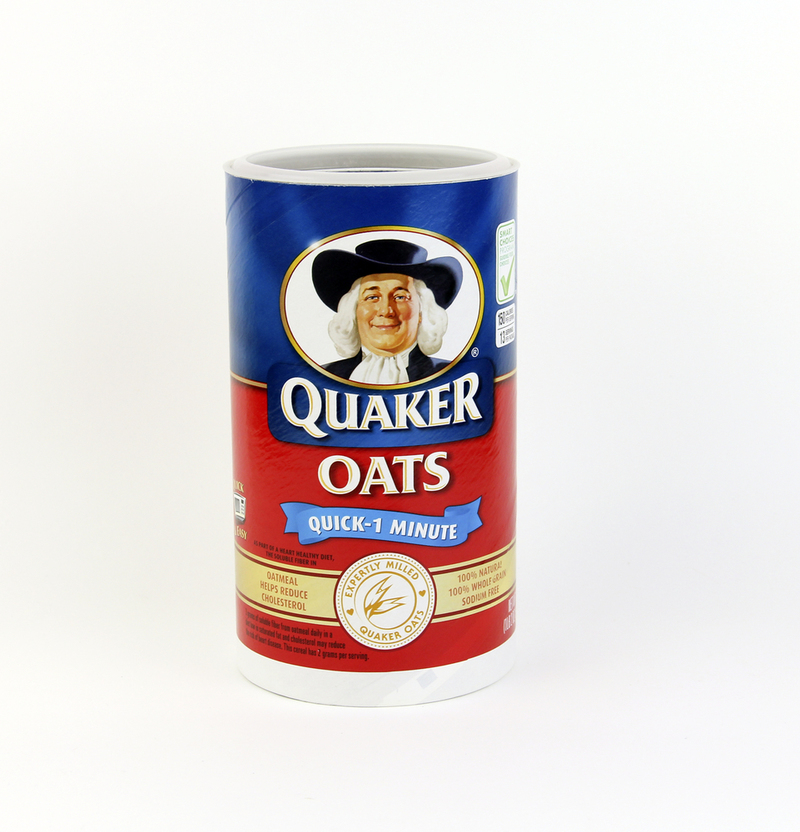
As we would expect, boxes flew off the shelves, but many didn't even claim their land. As for Quaker Oats, they never paid taxes on the 19 acres, and, alas, the Canadian government claimed it back for a small fee of $37.20 in 1965.
First Thanksgiving
The first Thanksgiving that was ever hosted in North America occurred in Canada by the English explorer called Martin Frobisher in Newfoundland back in 1578 during his journey to find the Northwest Passage.

It was only 43 years later—in 1621—that the pilgrims hosted their first Thanksgiving at Plymouth Plantation in Massachusetts. So we guess that explains why they're held in different months?
A Famous Final Battle
Dueling—that organized method of combat was used to determine a man's honor, but it has since the turn of the 19th century fallen by the wayside. Canada's last ever duel occurred in 1873 and was amusingly absent of the steely-eyed severity that one would expect.
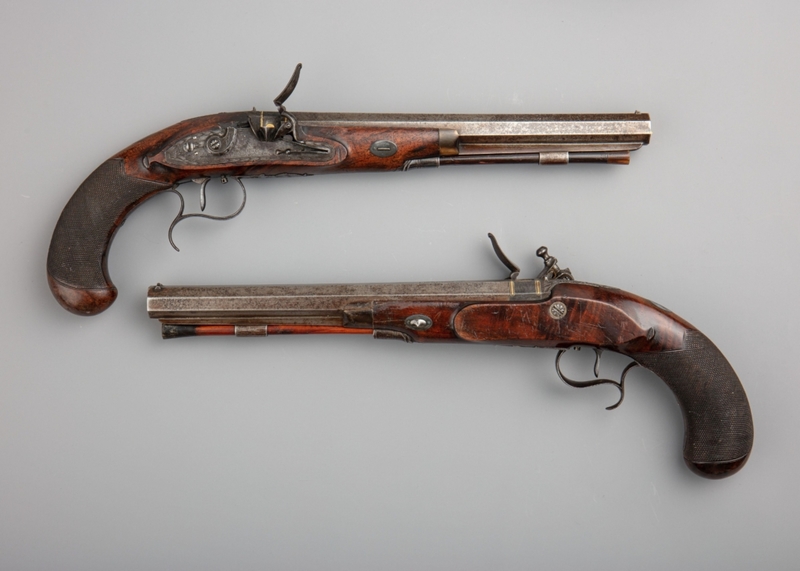
As the two men were standing back-to-back, both armed with pistols, they began pacing the necessary ten steps, but they were both gripped by an overpowering fear at what was about to happen. As they turned around to fire, one hit the ground immediately after he fainted from fright. The other was horrified, believing he had shot and killed him. Soon after, it was revealed that their pistols had been loaded with blanks!
Sorry?
Canadians are famous for saying "sorry" at any slight bit of offense. But interestingly, in the Canadian province of Ontario, an apology does not inevitably mean taking responsibility.

The province instituted a piece of legislation called the Apology Act, which states that speaking legally, an apology is not an expression of fault or responsibility. Sorry!
True North Cold and Free
One of the coldest temperature to have ever been recorded was in Canada. It was -63 C, that's -81.4 F, and it was recorded at Snag, Yukon back in 1947.
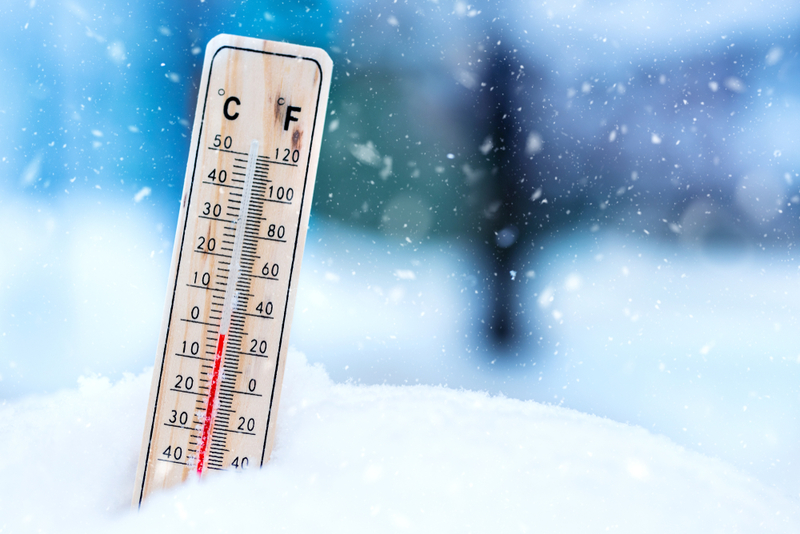
That's about the same temperature as the surface of Mars!
Stolen Valor
Canada has a volunteer organization that is all veteran and dedicated to exposing imposters attempting to pose as military personnel or veterans.

They do so because there are men who impersonate military personnel for a chance at stolen glory.
Fresh Snow
Can you guess which musician made the best-selling and highest-charting reggae single in history, earning them a spot in the Guinness Book of World Records twice-over? Might you think its Bob Marley?

But no, the answer is actually the Canadian rapper and reggae artist named Snow, whose single "Informer" hit #1 on the charts back in 1992, ultimately selling an unbelievable 8 million copies!
Canadian Content
Canadian content regulations specify that at least 35% of the music played on Canadian radio must be Canadian in some way or form.

These regulations only apply from 7 AM to 9 PM, now that's a lot of Celine Dion!
A Serious Choice
Back in 1995, the Canadian province of Quebec had a vote on whether they wanted to remain as part of Canada or leave and form an independent state. A massive 93% of the province came out to vote on the issue.
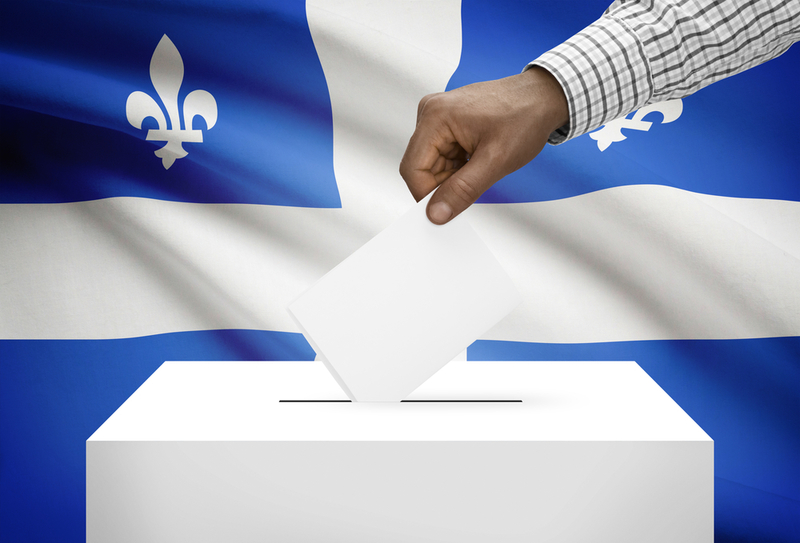
A very small amount of around 50,000 voters chose "No" on that day.
A Country by Any Other Name
The name Canada originates from the language of the Iroquois, which means "village," but this name was not actually favored when it came to naming the young country after it gained independence in 1867.
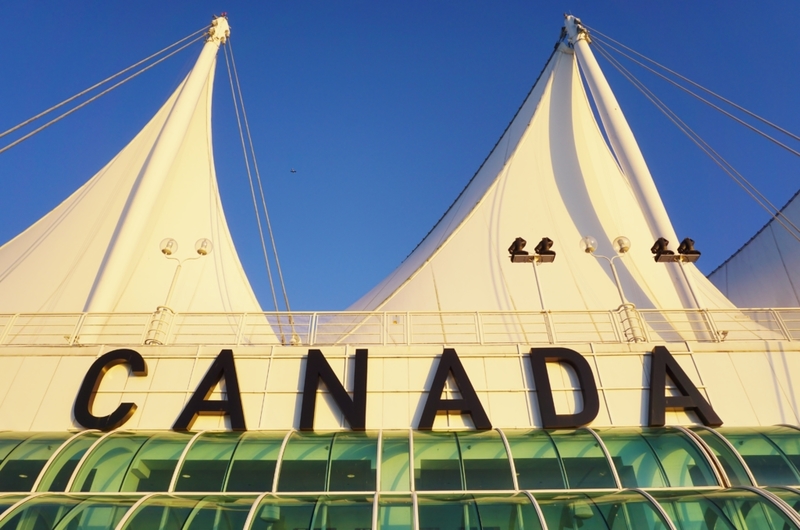
The names that were initially proposed were Borealia, Laurentia, Ursalia, Victorialand, and Transatlantica. We must say we prefer Canada!
Polar Express
The town of Churchill, Manitoba, is situated right on the rim of the Arctic and being so far north; it is frequented by polar bears, who are often seen lumbering through town or holding traffic up.
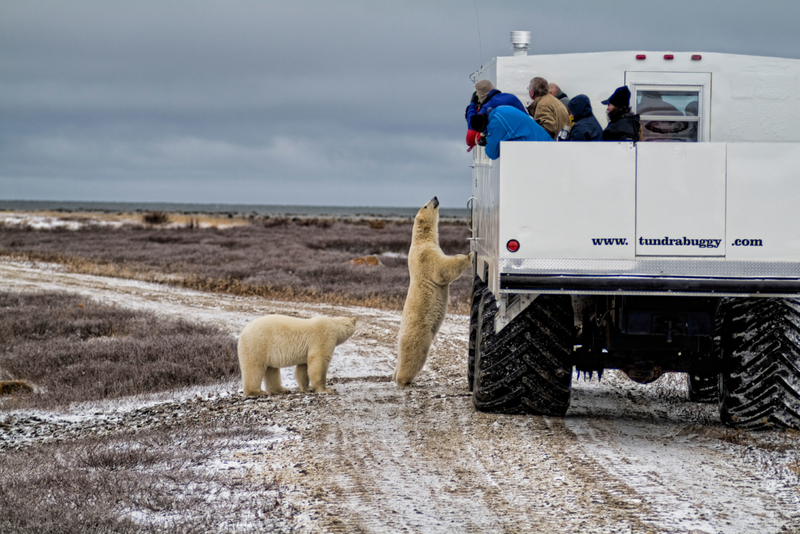
It is customary for people in this small town to leave their houses and cars unlocked in order to offer some safety for a resident, in case they need to flee from a hungry bear!
Voltaire and Canada
Voltaire was an 18th-century writer known for his cutting remarks as well as his well-put phrases, but he thought very little of Canada.

He belittled Canada, saying that it is a "country covered with snow eight months of the year, inhabited by barbarians, bears, and beavers."
Execution
Back in 1648, in a small village of New France in Canada, a military drummer was put on trial for being a homosexual.

The drummer was condemned to death, but after a last-minute intervention by Jesuit priests from the city of Quebec, the drummer's life was saved upon one condition: that he become New France's first official permanent executioner.
Now That's A Lot Of Water
Canada has an incredible amount of water; in fact, all of Canada's lakes, rivers, streams, and wetlands contain one-fifth of the entire world's natural freshwater.
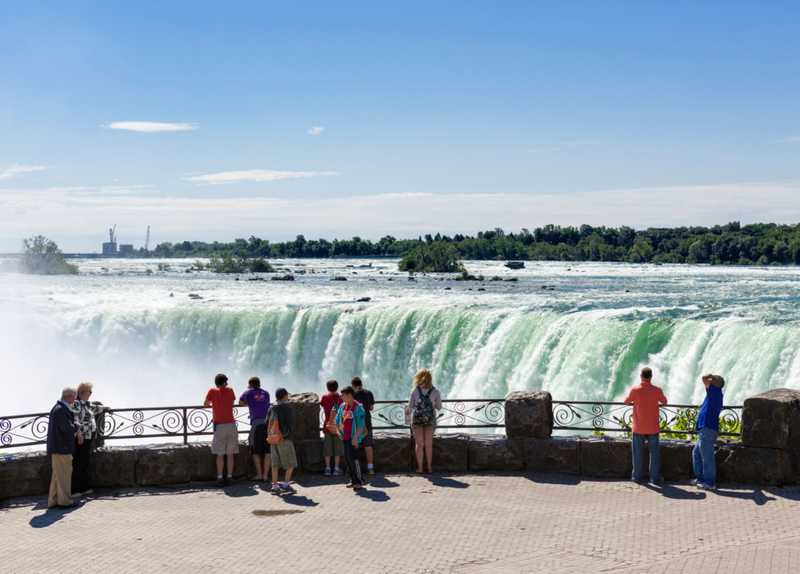
That's twenty percent of all the world's water, Canada certainly is a water-rich country.
Slurpee Capital
Despite being one of the coldest provinces in Canada, Manitoba has been dubbed the Slurpee capital of the world for a whopping seventeen years consecutively!

It's been estimated that, on average, Canadians purchase 30 million Slurpees annually.
Terry Fox
In 1980, a cancer patient named Terry Fox ran 5,373 km, that's 3,339 miles, across Canada in 143 days before dying. Terry Fox had lost his leg, but he still managed to run the equivalent of a full marathon every day for 143 days!
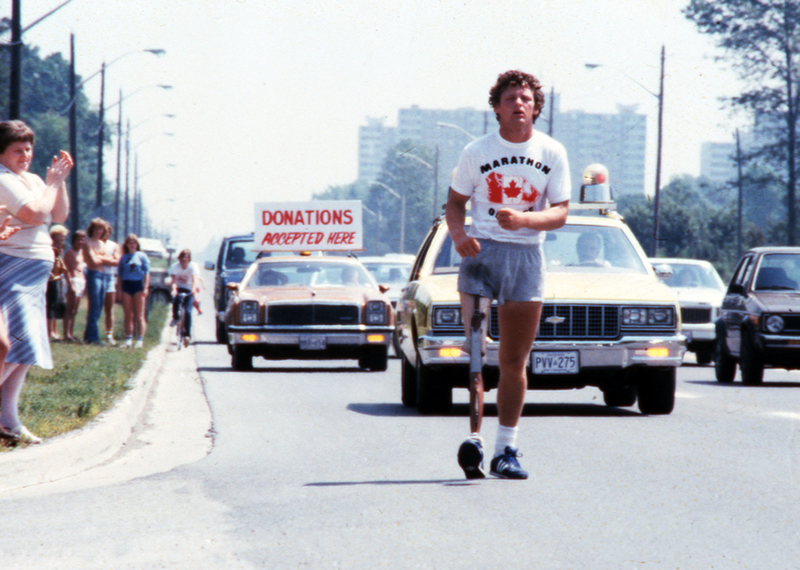
There is an annual fundraiser that is run in his name, and it is the biggest one-day cancer fundraiser for research in the world, involving millions of participants in over 60 countries.
Now That's An Interesting Name
Did you know that there is a small town that has curiously been named Dildo in the Province of Newfoundland? While the name goes back by hundreds of years to 1711, no common explanation can be found for where the place name originates from.
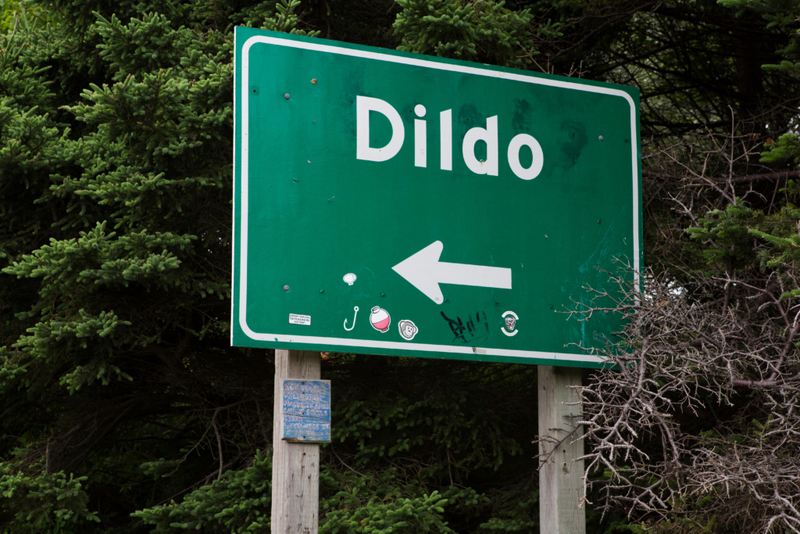
While there have been multiple attempts to change the name, they have all failed, and the name remains as is to this day.
Unique Kraft
Kraft Dinners are playfully attributed as being Canada's national dish. The average Canadian will eat about 3.2 boxes of Kraft Dinner per year, which is a tremendous 55% more than the average American does.
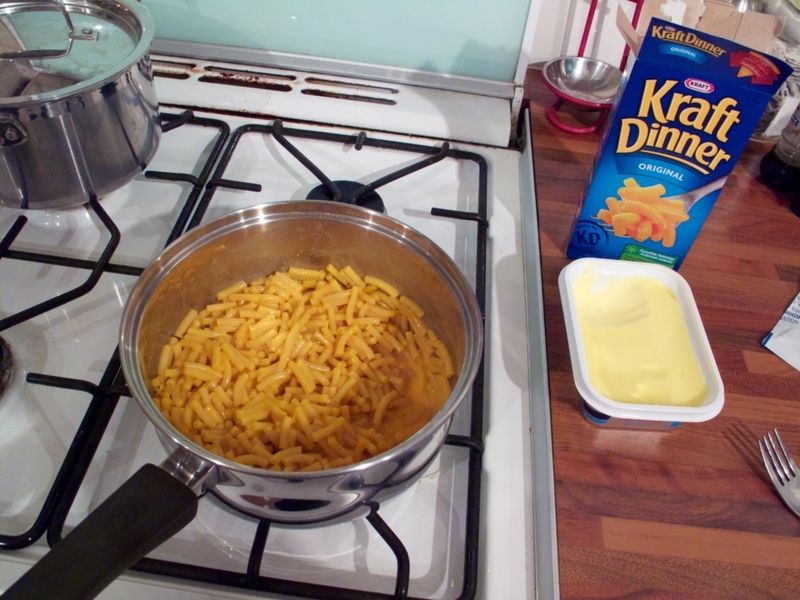
Out of the 7 million boxes sold all around the world on a weekly basis, Canadians purchase 1.7 million of them.
It's Not Butter!
When Newfoundland joined Canada as one of its tenth provinces back in 1949, they had one interesting requirement upon joining.

Nowadays, we would never believe this, but their condition was that they must be allowed to continue producing and selling margarine.
Entry to Canada
All new citizens of Canada are given a Cultural Access Pass, which allows them free entry to over 1000 of the country's premier cultural attractions, including museums, art galleries, national parks, and historic sites.
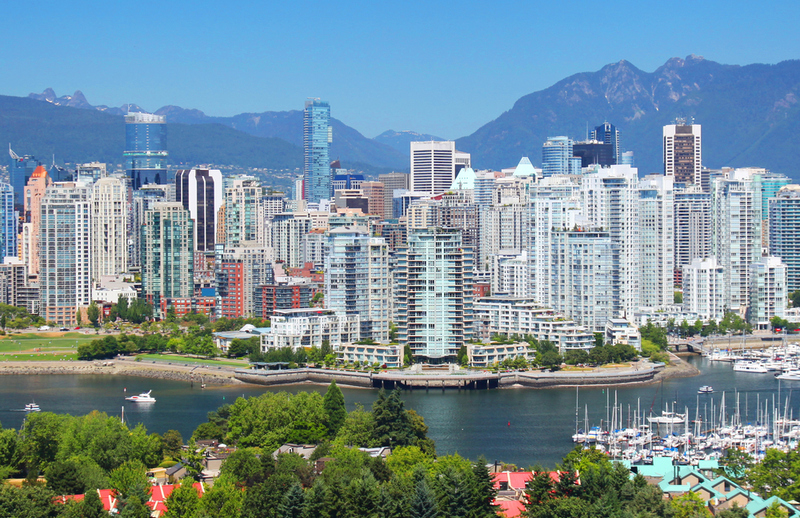
The reason Canada does this is to give new Canadians the opportunity to explore and learn what it means to be Canadian.
Welcome to Bob
There is a territory in Canada's arctic that almost ended up being called Bob. In 1996, the Northwest Territories in Canada's freezing Arctic held a naming contest for when the territory was to be split into two. The top vote for new names was the name "Bob," ranking way ahead of the other competitors.
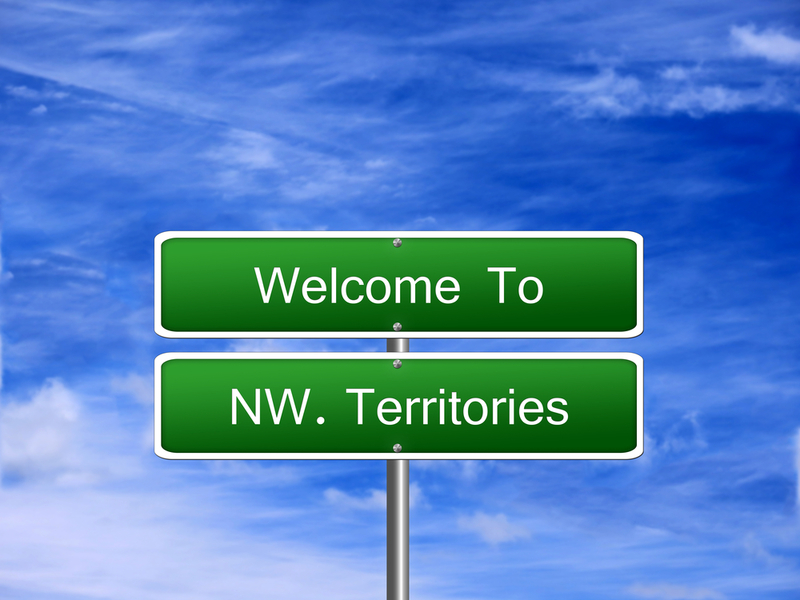
A website was created to campaign for the name Bob, much to the dismay of some leaders. Because of all the buffoonery, it was decided to just keep the old name of Northwest Territories.
The Iron Ring
All Canadian engineers receive an iron ring when they graduate from engineering programs throughout the country. They get this ring to memorialize a bridge that collapsed as a result of the error in the judgment of Canadian engineers, which killed 75 people.

The weight of the ring, which serves to rub against the paper as they write or draw, acts as a reminder to always have humility and consider their fallibility as professionals.
Rats!
The province of Alberta is the largest rat-free populated area in the world. But it's not by accident! Back in 1951, the province began an aggressive rat control program that involved gassing, poisoning, and shooting rats as well as blowing up rat-infested buildings.
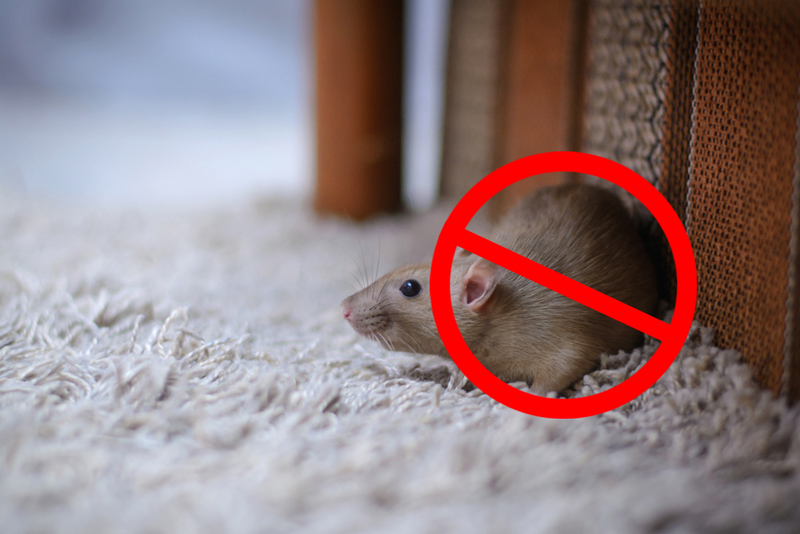
About a dozen or so rats enter Alberta every year, but they are very careful to keep the numbers down by employing rat control specialists before they can reproduce.
Lakes and Their Names
Canada has established a policy by which it has named thousands of its titleless lakes after fallen soldiers from the Canadian armed forces. This has been in place since the end of World War II.
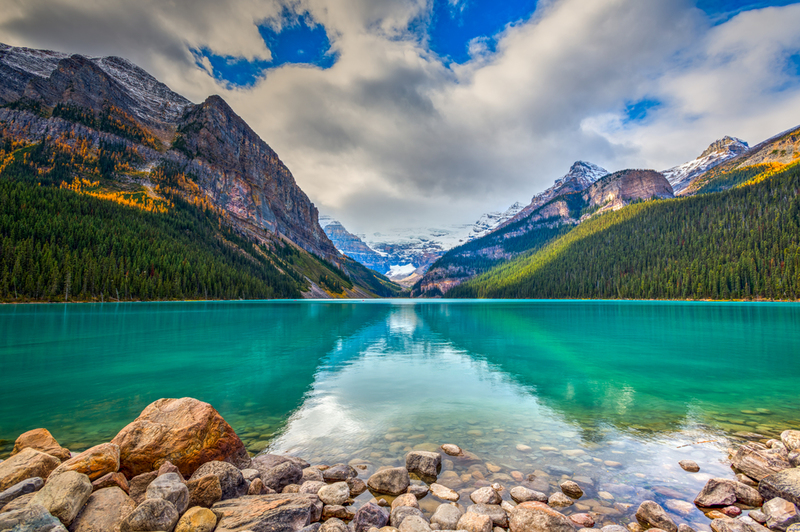
The province of Manitoba, which has many unnamed lakes, has enthusiastically adopted this policy.
In Soviet Canada, You Order Queen
Seeing as the late Queen had a unique relationship with Canada, entirely separate from her role as the firmer Queen of the United Kingdom, Canada still features the Queen of England on their money.

Did you know that anyone can send in an order for a portrait of the former Queen from Canada's Government's official website, and it will be shipped to them in Canada free of charge?
Exploring Canada
There are people that may not know that Christopher Columbus was beaten to North America by 500 years? Archeologists and historians generally believe that in 1000 AD Norse Vikings settled in L'Anse Aux Meadows in Newfoundland on the Atlantic coast.
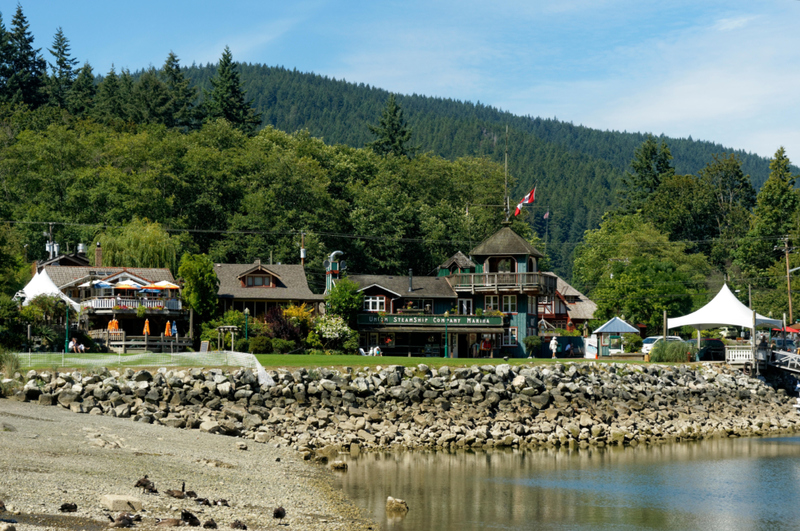
Because of their establishment of primitive colonies, L'Anse Aux Meadows was named a World Heritage Site in 1978.
Sweet Maple
We all know Canada loves its sweet sugary maple syrup. But Canadians also take their sweet treat so seriously that they have strategically set up a reserve of it in case of emergencies?
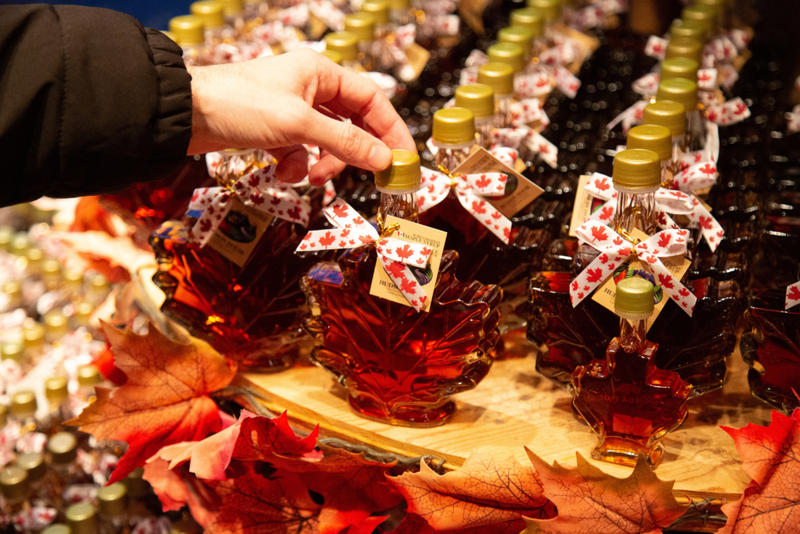
In 2012, there were news reports that thieves in Quebec had made off with $30 million worth of maple syrup from their stock.
Go Nuts for Donuts
While we all know that Donuts is a favorite food amongst Americans, we may also think that it is consummately American.

But actually, the tasty pillow of fried dough are more widely devoured in Canada. That's right—Canadian citizens eat the most donuts in the world while also having the most donut shops per capita. Yum!
Contested Territory
There is a small island in the middle of the Arctic called Hans Island that is a disputed territory between Denmark and Canada. The two countries' have taken the dispute all in good stride.

Every once in a while, each country sends in a military team to dismantle the others' flagpole and upraise their own, leaving a gift of Canadian whiskey or Danish schnapps for the next team.
Political Animal
As ridiculous as this may sound, there was a satirical political party called The Rhinoceros party that was actually registered in the Canadian elections. They have campaigned on nullifying the law of gravity and promoting 'higher' education by building taller schools. With their slogan being "a promise to keep none of our promises."

The Rhinos even went on the win a surprising 1.01% of the vote in the 1980 election.
Accepted Member of the US
In the first constitution of the United States in 1781, the nascent Articles of Confederation, there is a condition stating that if Canada ever does agree to become a member of the United States, they will automatically be accepted.
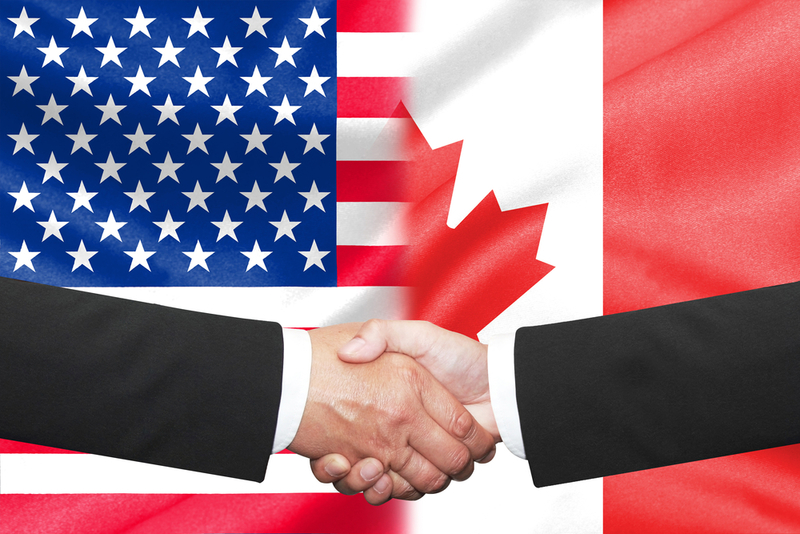
Canada is the only country, though, as any other colony, will require the consent of the other states.
Border Patrol
Every six years, a 20-foot-wide section of the border between Canada and the US is deforested. This includes 5,525-miles of mountains, forests, and remote islands.

While it is supposed that very few people will actually stumble upon this area, this labor-intensive process is still performed as a means of ensuring that anyone who reaches the border knows where they are.
Inspired Pizza
Apparently, Hawaiian pizza was invented in Canada by Greek Canadian entrepreneur Sam Panopoulos back in 1962. Or at least, Panopoulos has claimed to be the creator, but so have a few others.

Panopoulos loved Chinese dishes that combine sweet and savory flavors, and so he also decided to experiment by combining different ingredients to pizza, including pineapple and ham.
Being Neighborly
When the September 11th attack occurred in 2001, all US aircraft, including airports, were shut down. But what would happen to the 255 flights that were already in the air and bound for the US?

All these flights were transferred and taken in by Canada in the act of aid, which was called Operation Yellow Ribbon. This included over 255 flights with 30,000 people, and Canadians in many cities throughout the country hosted these individuals in their homes.
Good Friends
We all know that the US and Canada have a very close relationship; let's see the specific details of the close proximity between the two countries.
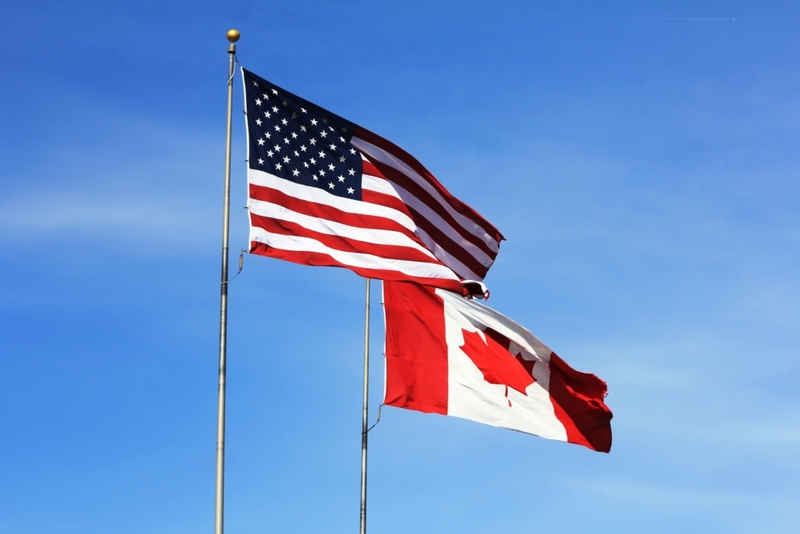
According to the data, 90% of Canadians live within 100 miles from the US border.
The Best Slogan
Back in the early 197os, CBC Broadcaster Peter Gzowski announced a competition to his fellow Canadians to complete the sentence "As Canadian as…".

A high school student went on to win the challenge with the vague and obscure entry that stated, "As Canadian as is possible under the circumstances."
Bathtub Racing
This might not sound like a real thing, but it is! There is an annual bathtub race that has taken place in Nanaimo, British Columbia, since 1967.
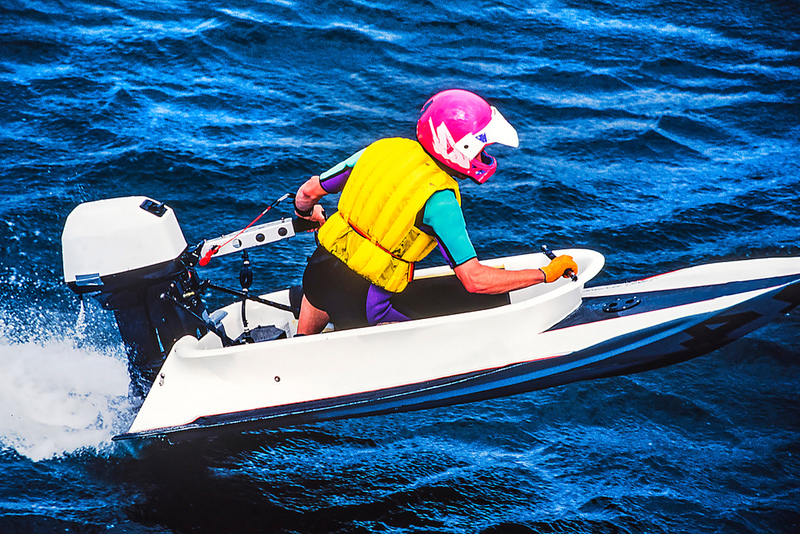
The race is currently around 58 kilometers (36 miles) long and travels through the Georgia Strait, ending in the Nanaimo harbor.
Fort Blunder
The United States began building a fort in 1818 on the north side of Lake Champlain in New England. The British had recently invaded America through the lake during the War of 1812 and wanted to better protect themselves in case of another attack. But Americans accidentally built the fort on the Canadian side of the border!
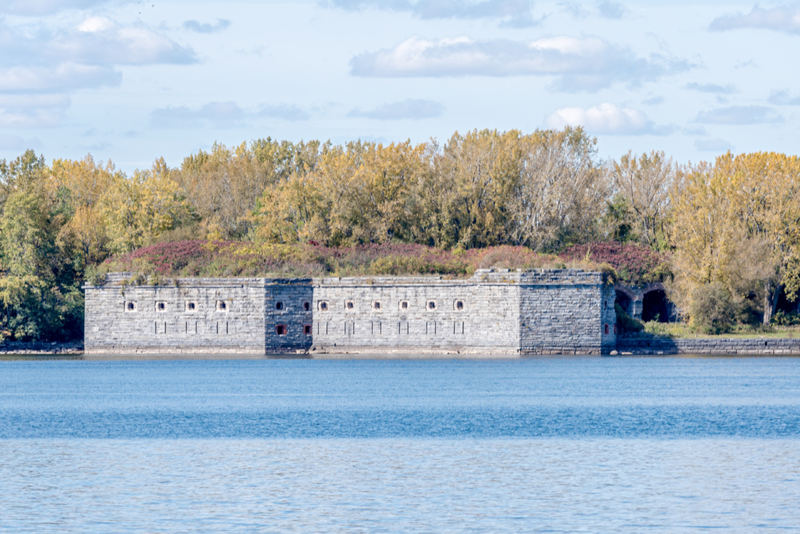
Once this mistake became known, all work on the project ceased, and the building site became unceremoniously known as Fort Blunder.
Now That's A Lot of Coinage
Back in 2007, the Royal Canadian Mint produced its first-ever coin worth $1 million! The coin is made of 100% solid gold and weighs in at 100kg or 220 lbs. It was created to promote the Mint's new line of 10z gold coins.
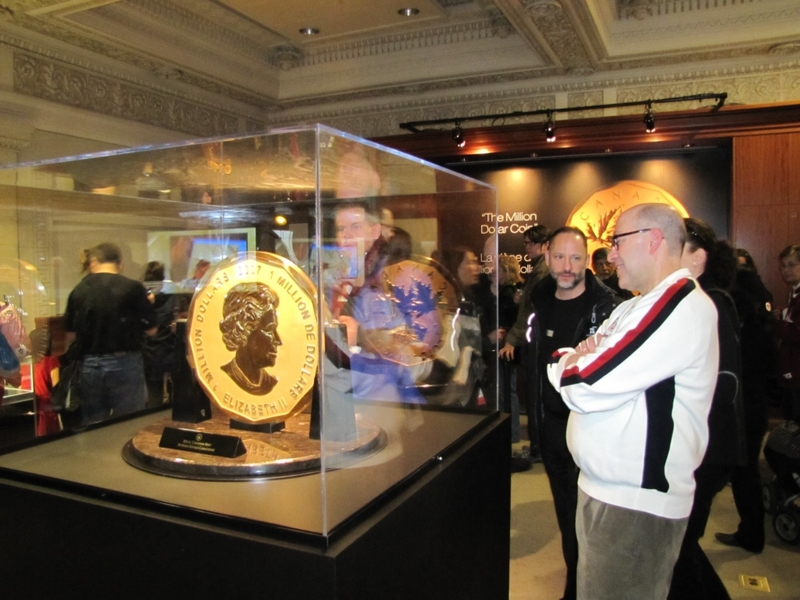
A gang of thieves tried to pull off a heist in 2017 in Berlin of one of these mints that were being displayed in a German museum.
French, Please!
Montreal is the world's second-largest French-speaking city after Paris. Despite being in Canada, Montreal is a French province. Although many people in Montreal speak English, you will find that English is rarely used in any other part of the province.
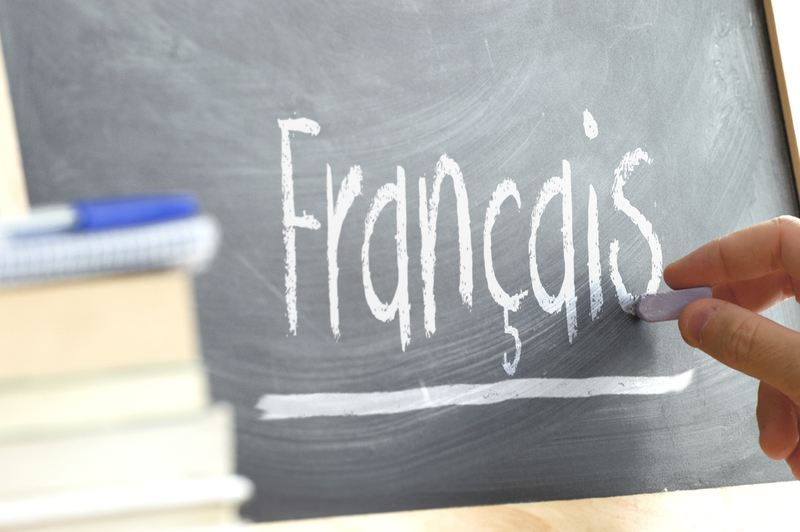
Around 70 percent of Montreal residents speak French as their primary language at home, and Quebec is the only province where French is the sole official language.
IMAX was Invented in Canada
IMAX was first invented by a trio of Canadian filmmakers — Roman Kroitor, Graeme Ferguson, and Robert Kerr back in 1967. After being independently asked to produce large-screen films for Expo 67, the filmmakers understood they needed different equipment.

When Japan asked them to produce a film for its Expo '70, the men created Multiscreen Corporation with some financial support from Fuji. The three directors recruited engineer William Shaw to assist them in inventing the cameras needed to film in image maximum — IMAX for short. Tiger Child, screened at Expo '70, was the first-ever IMAX movie.
Unusual Tax Returns
Canadians can deduct several things from their tax returns, but I bet you didn’t know that dog food is tax-deductible in Canada.

It began when the Tax Court decided a farmer could claim cat and dog food because they were outdoor pets meant to keep wildlife away from their blueberries. Dog food is also deductible if it is for a service dog.
Poutine
Poutine has been called many things, some people think of it as the national dish of Canada. Others call it an instant artery-clogger, and there's even a restaurant in Montreal that offers the bravest among its patrons with a 15-pound monstrosity called "The Heart Attack."

Poutine is comprised of three main ingredients: French fries, brown gravy, and cheese curds. It comes from rural Quebec and has been traced back to the 1950s.
Margaret Marshall Saunders
Canada's first million-selling author was Margaret Marshall Saunders, with her novel Beautiful Joe in 1894. In response to the publishing industry's male-dominated nature, and she shortened her name to Marshall Saunders.
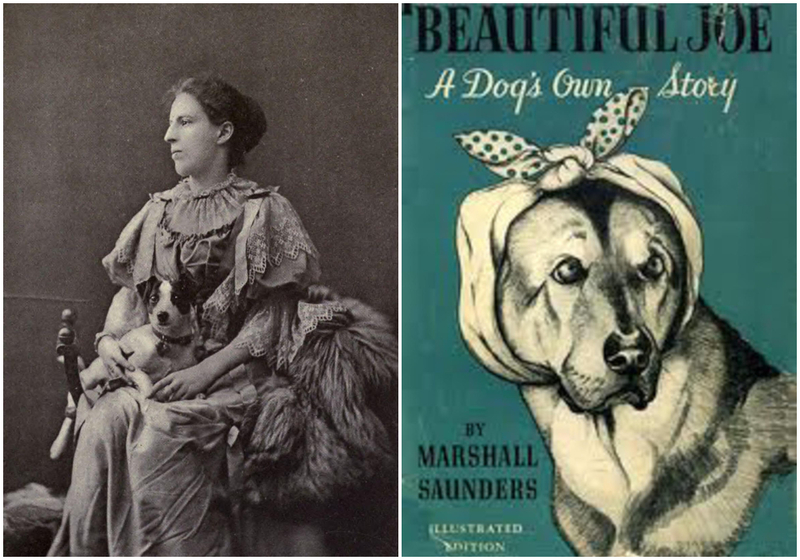
In 1889 Saunders submitted "Beautiful Joe" to publication in 1893, both the book and its subject received worldwide attention. It was the first Canadian book to sell over a million copies, and by the late 1930s had sold over seven million copies worldwide.
Insulin is From Canada!
Insulin was first discovered in 1921 by Toronto doctor Frederick Banting and further developed at the University of Toronto by Banting, Charles Best, John Macleod, and Bertram Collip.

Banting and Macleod were both awarded the Nobel Prize in Physiology or Medicine two years later. According to the Nobel Prize website, the team patented their insulin extract but sold the university's rights for $1, which used the money to fund new research.
Nobel Prizes
As we just mentioned the incredible discovery of insulin, we thought we'd segue into the subject of Nobel prizes. Canada boasts 15 Nobel Prize laureates, the first being in 1923: Frederick G. Banting, Nobel Prize in medicine for the discovery of insulin.

The last one was in 2019: James Peebles, Nobel Prize in physics for physical cosmology, mapping out the chemical makeup of the universe at its beginning and later describing the way that galaxies are formed.
Milk in Plastic Bags
Milk does a body good; at least, that's how the old marketing slogan goes. But that goodness happens regardless if the milk is poured from a jug or a plastic bag. Milk in a plastic bag, eh? Yep, it's the Canadian way, well, as long as you live in Canada — particularly the province of Ontario.
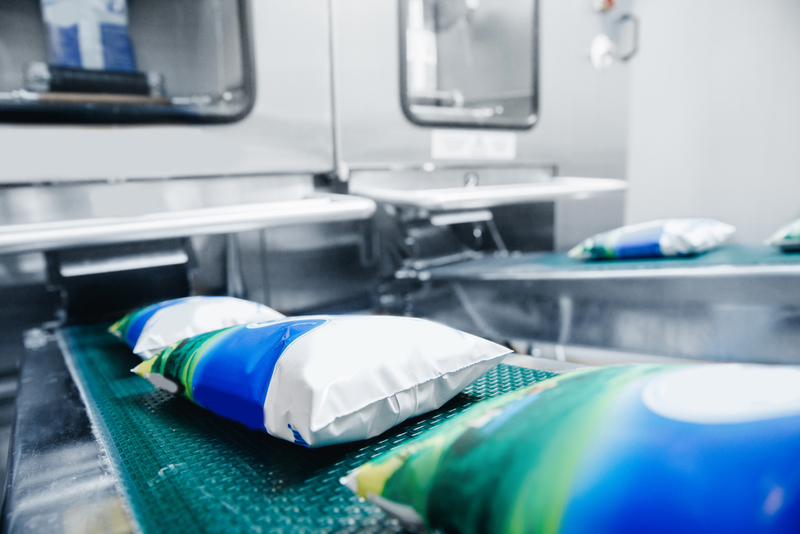
In these plastic bags, milk is sold in the grocery stores and contains three pouches that are collectively equal to about a gallon. A few years ago, this may have sounded weird, but according to Packaging Digest, thin plastic pouches are a modern trend with an environmentally-minded population eschewing rigid plastic containers.
Wireless radio transmission
Canadian Reginald Aubrey Fessenden was a prolific inventor in wireless technology — he was the first to broadcast on the AM radio band in 1900 — although he's often regarded as an unsung hero in Canada because Italian inventor Guglielmo Marconi outshined his inventions in radio technology.

Fessenden built two-way radio transmission towers — one near Boston and the other in Scotland — and issued the first transatlantic radio broadcast in 1906. Fessenden is also known for inventing sonar. He passed away in 1932; his tombstone includes Egyptian hieroglyphics that translate to: "I was yesterday, but I saw tomorrow."
Famous Canadian Actors
Although the USA is famous for Hollywood, many popular actors, and especially comedians, come from Canada, including John Candy, James Cameron, Jim Carrey, Ryan Gosling, Rachel McAdams, Mike Myers, Seth Rogen, and Ryan Reynolds!
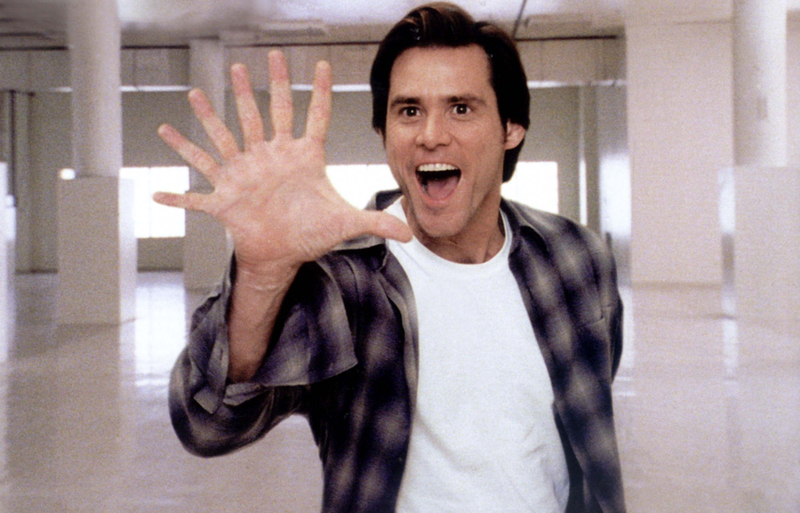
And that's not all, there's also Will Arnet, Catherine Ohara, Keanu Reeves, Pamela Anderson, William Shatner, Eugene Levy and many more! Now that's a long list!
Measurements in Canada
Both Britain and the United States have influenced Canadians, so they are on both the metric system and the imperial system. This can be very confusing. For example, Canadians follow speed limits and measure length in meters, but they measure their height in feet and their weight in pounds.
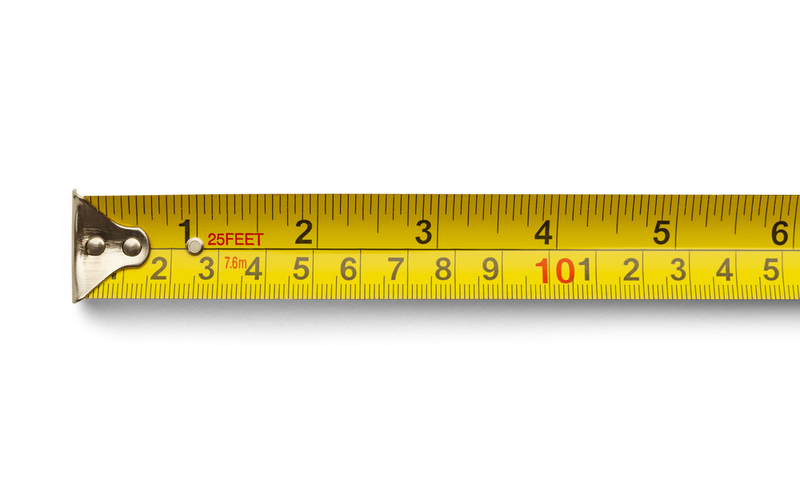
However, their driver's licenses are the opposite. They measure in meters and kilograms. They check the outside temperature in Celcius, but they cook in Fahrenheit. Now that's funny, eh?
Loonie Toonies
Canadians call their one-dollar coin the loonie. When in full production, 15 million loonies can be produced per day. The loonie derives its nickname from the picture of a solitary loon on the reverse side of the coin. Their two-dollar coin is called the toonie.

We guess they like to rhyme... The two coins are different in appearance, but similar in size, so be sure to double-check before plunking down a "buck."
A New Way to Police
Police officers in the city of Prince Albert, in the central province of Saskatchewan, will give out the "positive tickets" to youngsters who are seen crossing the road safely or picking up litter.

The rewards on offer include free hamburgers, cinema tickets, or a chance to see the local hockey team in action, all of which have been donated by local businesses. Now that's one way to promote a wholesome society!
The Bank of Canada
The Bank of Canada was established as a privately-owned institution, with shares sold to the public at a par value of $50. In 1938, all shares were then purchased by the Government of Canada, and the Bank became a Crown corporation. The Bank of Canada is the sole issuing authority of Canadian banknotes.
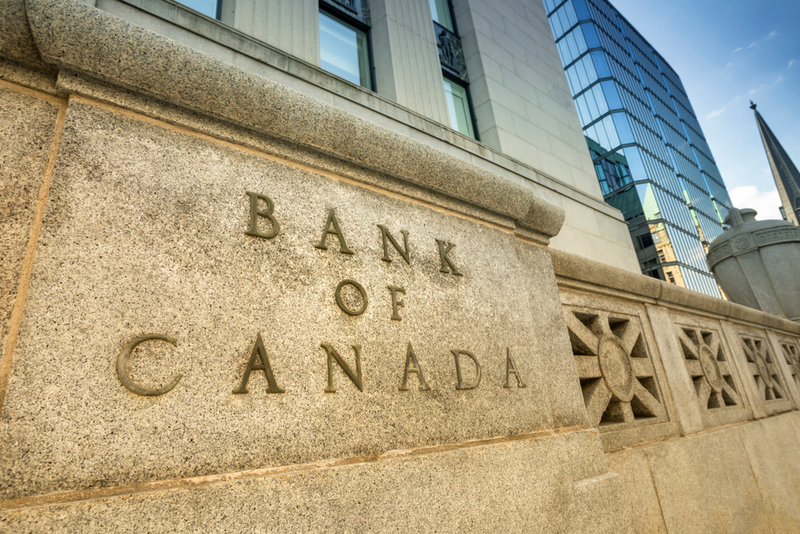
The Canadian Bank Note Company has held the contract to produce the banknotes since 1935. During World War II, the Bank of Canada’s nine victory Bond campaigns was raised to almost $12 billion for the war effort. Even after the war, the program was continued with Canada Savings Bonds.
The World's Smallest Jail
Canada has the world's smallest jail; this absolute distinction belongs to the jailhouse in Rodney, Ontario, which measures just 4.5 m by 5.4 m. The jails in Providence Bay, Port Dalhousie, and Berens River are also pretty small. The Coby Jail has 2-foot-thick limestone walls mined from the local quarry.
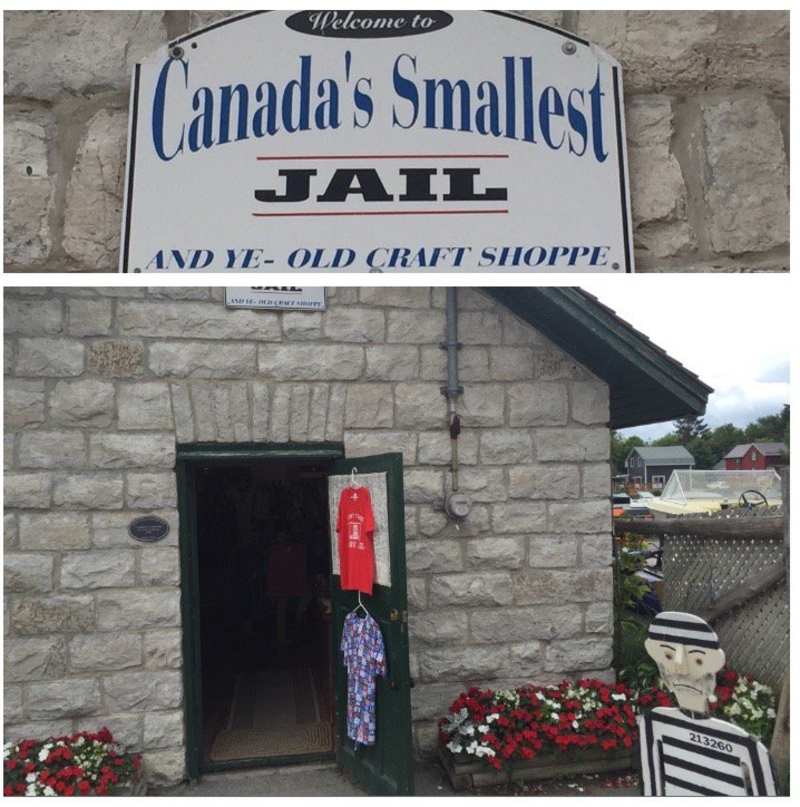
These, along with the iron bars, remain unchanged since the construction of the jail in 1884. Inside the jail were two cells, in addition to the warden's office, now isn't that quaint for a jail!
So Who is Ogopogo?
Forget the Loch Ness Monster: Canada has its own mysterious lake creature, Ogopogo, who reportedly lives in Lake Okanagan, British Columbia. This fierce lake monster resides at Squally Point and has inconclusively been spotted throughout the lake for centuries.

Descriptions vary, but certain characteristics have been repeated throughout the years: Ogopogo is green with a serpentlike body about 25 meters long. Many say its head looks like a horse, while others say that it’s reptilian or goat-like.
Canada Contribution to Space
Canada’s most famous space contribution is the Canadarm, a remote-controlled mechanical arm known as the Shuttle Remote Manipulator System. During its 30-year career with NASA’s Space Shuttle Program, the robotic arm was deployed, captured and repaired satellites, positioned astronauts, maintained equipment, and moved cargo.

Now retired, the Canadarm is on display at the Canada Aviation and Space Museum in Ottawa, Ontario.
Canada's Rich Natural History
There are currently 20 UNESCO World Heritage Sites in Canada. Each UNESCO site was chosen because it contributes to Canada’s rich natural and cultural history.

Wood Buffalo National Park is the second-largest national park on earth as well as the largest in Canada, it's located between Alberta and the Northwest Territories, and was established to allow the Wood Bison to roam freely.
Cirque de Soleil
The famous Cirque de Soleil was created in Montreal, Quebec! It is the largest contemporary circus producer in the world. Since its founding, the contemporary circus has performed for more than 180 million people in 450 cities on every continent but Antarctica.

It was founded in Baie-Saint-Paul on 16 June 1984 by former street performers Guy Laliberté and Gilles Ste-Croix. Phew, that’s a long list of fun and interesting facts about Canada, we sure learned a lot!